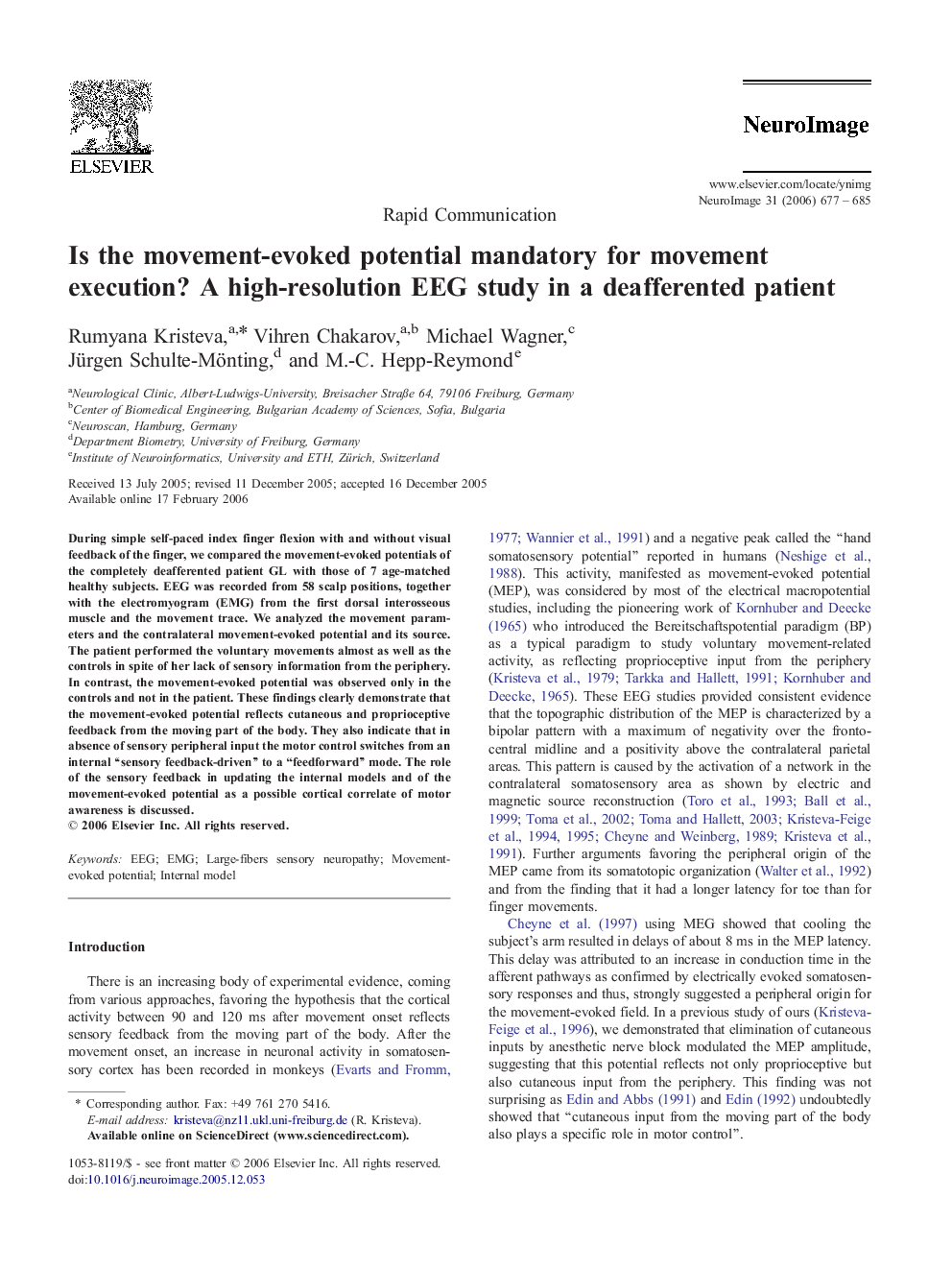| Article ID | Journal | Published Year | Pages | File Type |
|---|---|---|---|---|
| 3073737 | NeuroImage | 2006 | 9 Pages |
During simple self-paced index finger flexion with and without visual feedback of the finger, we compared the movement-evoked potentials of the completely deafferented patient GL with those of 7 age-matched healthy subjects. EEG was recorded from 58 scalp positions, together with the electromyogram (EMG) from the first dorsal interosseous muscle and the movement trace. We analyzed the movement parameters and the contralateral movement-evoked potential and its source. The patient performed the voluntary movements almost as well as the controls in spite of her lack of sensory information from the periphery. In contrast, the movement-evoked potential was observed only in the controls and not in the patient. These findings clearly demonstrate that the movement-evoked potential reflects cutaneous and proprioceptive feedback from the moving part of the body. They also indicate that in absence of sensory peripheral input the motor control switches from an internal “sensory feedback-driven” to a “feedforward” mode. The role of the sensory feedback in updating the internal models and of the movement-evoked potential as a possible cortical correlate of motor awareness is discussed.
